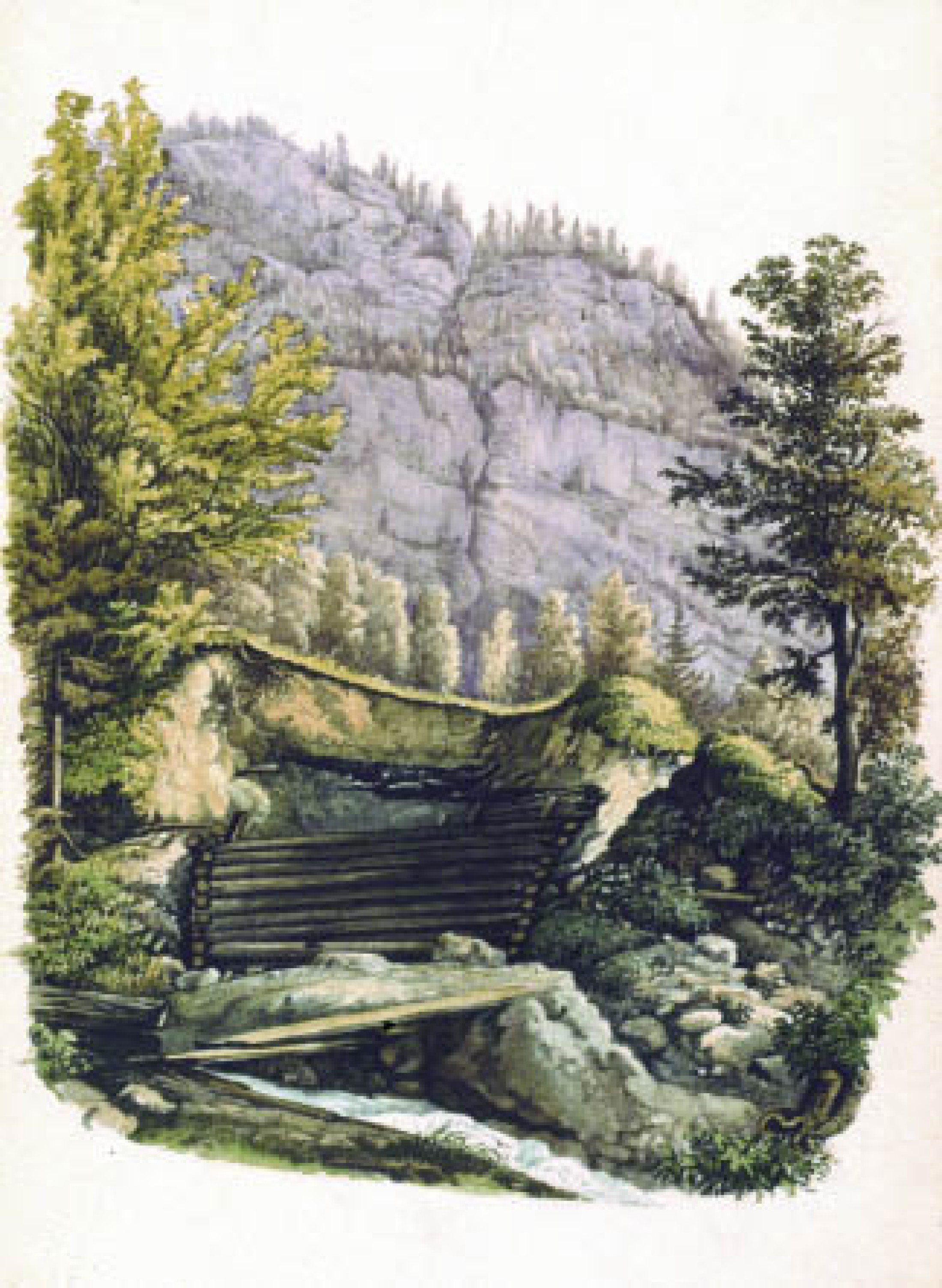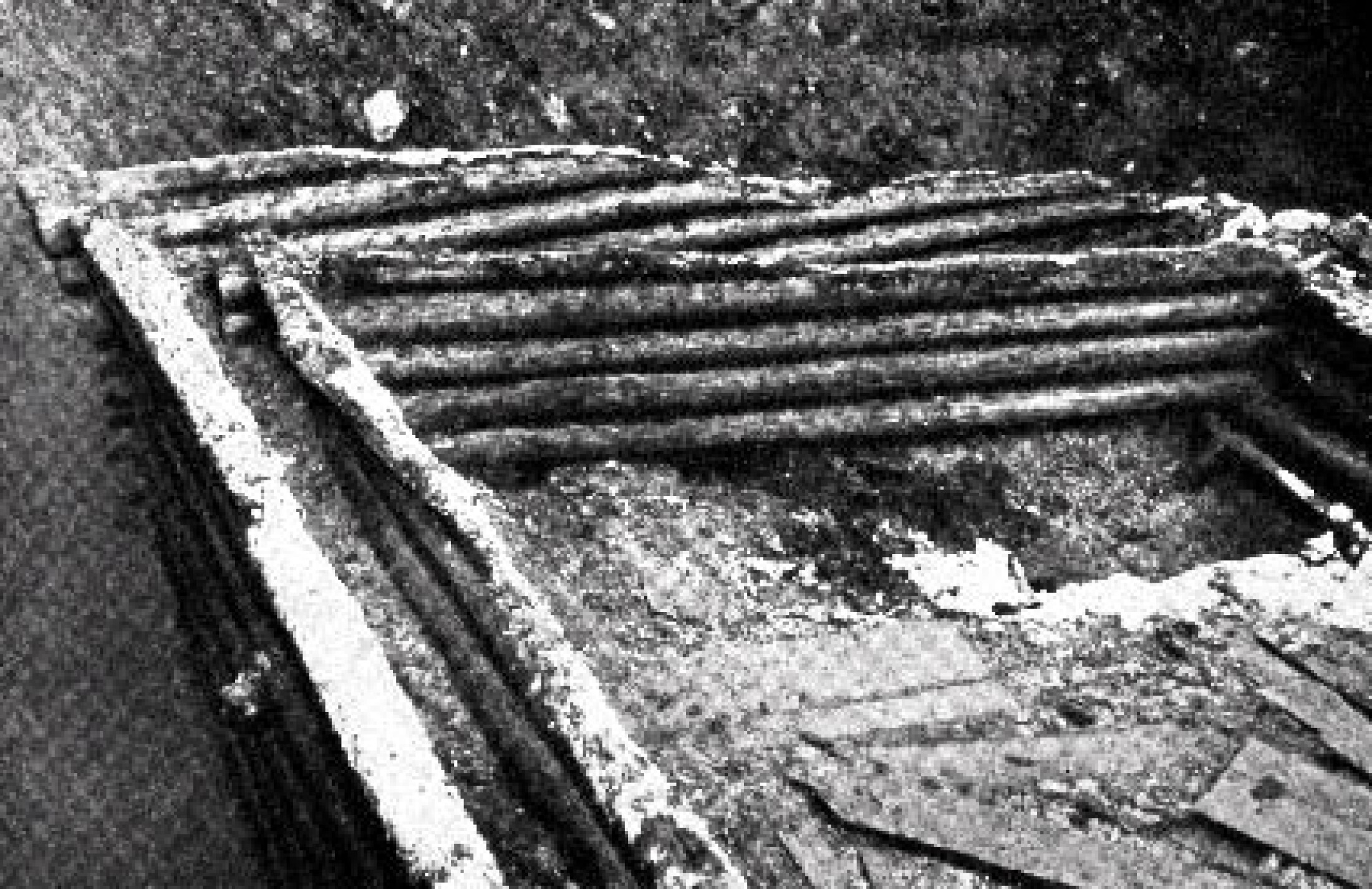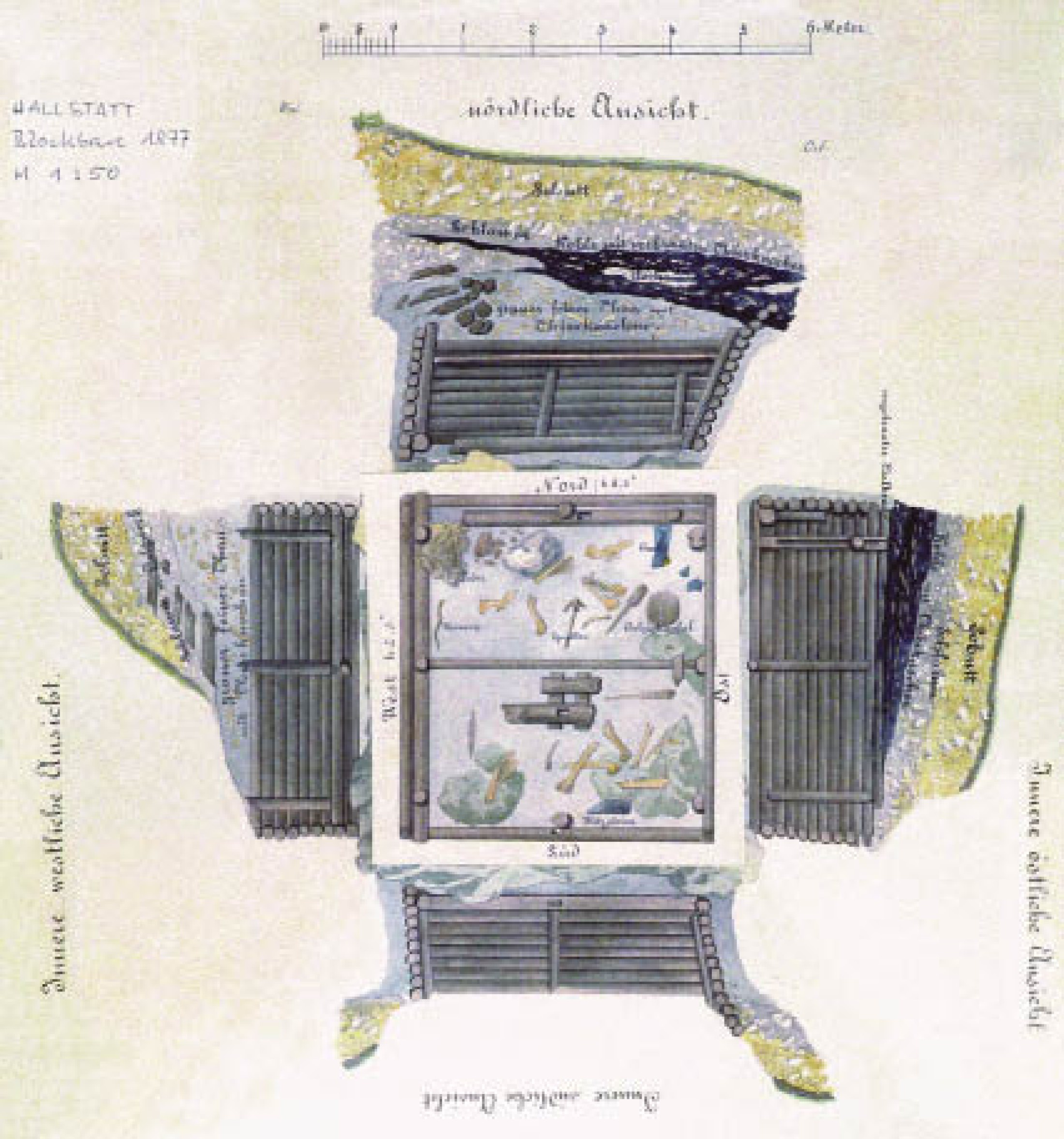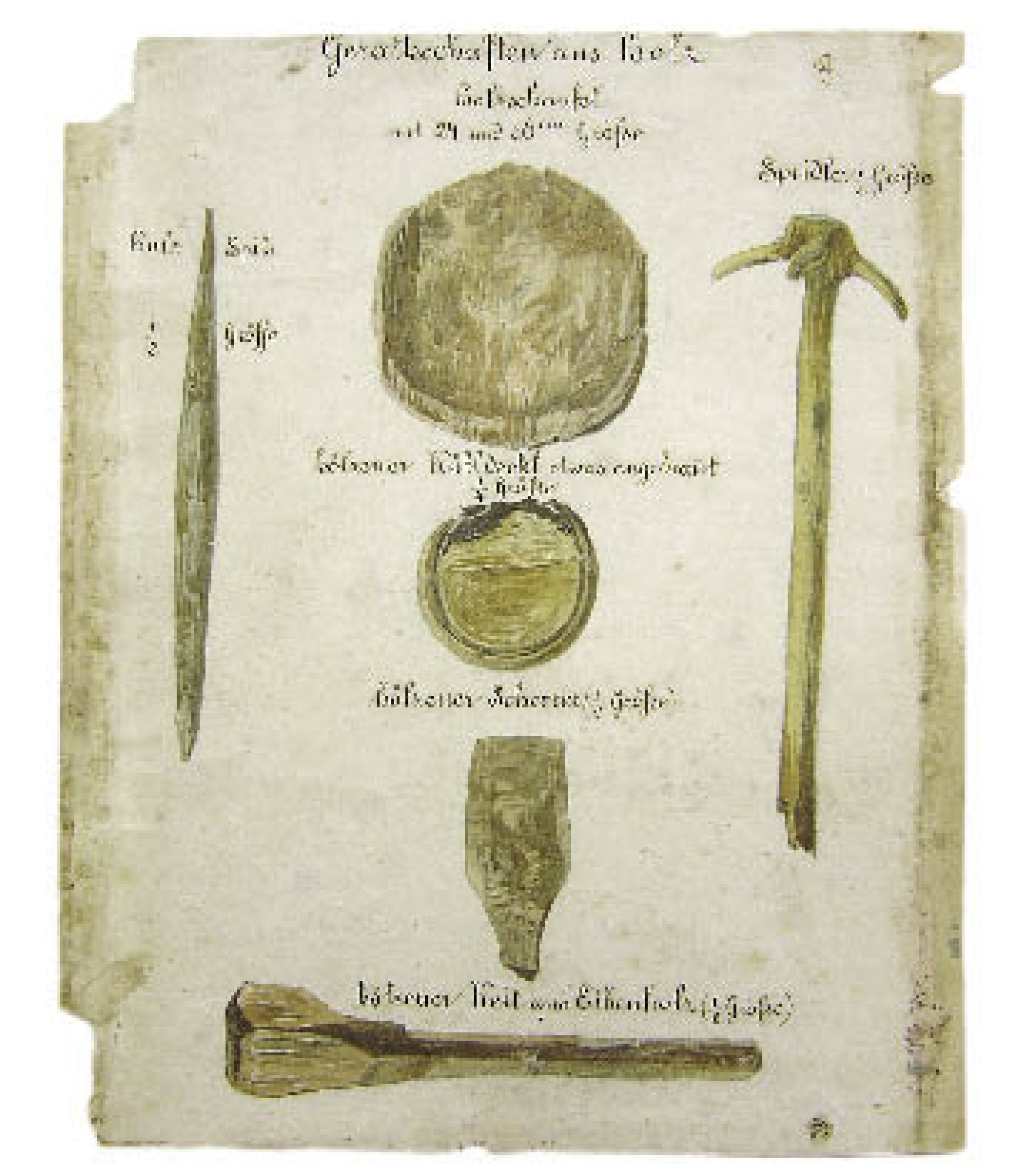Bronze Age meat curing vats
According to analyses of the animal bones found nearby, the solid wooden huts and the vats they contained, both of which were found at an early stage of excavation work in Hallstatt, would have been used to cure meat. Since the 19th century, log cabin-like constructions (or Blockbau) set into pits in the ground, have repeatedly been discovered on the mountain, and were initially identified as prehistoric houses dating back to the time of the earliest mining. Eight such constructions are now known, two of which have been archaeologically investigated and documented.Early interpretations of the wooden huts
Interpretations based on modern analyses
Early interpretations of the wooden huts
The first was uncovered in 1877 as a result of a landslide and excavated in the following year. It is well illustrated by watercolours of the time. The second log construction was dug up by Friedrich Morton in 1939 and is characterized by double walls sealed with clay daub. Because of the numerous everyday items found in them, they were at first thought to be dwellings dating to the Celtic (or Late Iron Age) period. Later, they were considered to have been basins for collecting natural brine. But the interpretation continued to alter. In the 1990s, radiocarbon analyses showed that the basins were much older than assumed.Interpretations based on modern analyses
The analyses showed that they were dated to the 13th/12th century BC, that is to the Bronze Age. Excavations conducted in the High Valley on behalf of the Natural History Museum, Vienna, in 1993 and 1994 led to a reinterpretation of the structures. Archaeologists found a large number of animal bones, mainly from pig; these were subjected to archaeozoological analysis at the Natural History Museum, Vienna. Their construction indicates large-scale meat processing in the Salzbergtal valley with a production volume above and beyond the meat requirements of the inhabitants living in the settlement(s) in Hallstatt.(Reschreiter, H. – Kowarik, K. – Loew, C.)





